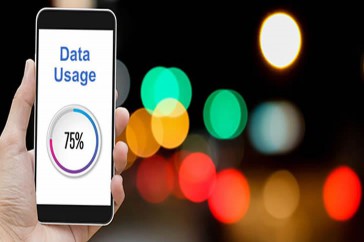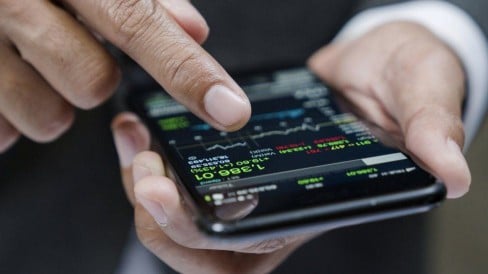In today’s connected world, mobile phone data has become a valuable resource. Whether you’re browsing the web, streaming videos, or using social media, it’s important to make the most out of your mobile data plan. This article aims to provide you with effective tips and tricks to help you maximize your mobile phone data usage, ensuring that you stay connected while keeping an eye on your data limits.

Monitor Your Data Usage
The first step to maximizing your mobile phone data usage is to monitor your data usage. Most mobile phones provide built-in tools or apps that track data usage. By regularly checking your usage, you can get a clear picture of how much data you’re using and adjust your habits accordingly. Set up alerts or data caps to receive notifications when you’re nearing your limit.
Connect to Wi-Fi Networks
Utilizing Wi-Fi networks whenever possible is a simple yet effective way to save mobile data. Wi-Fi networks are available in many public places, such as coffee shops, restaurants, and libraries. Make it a habit to connect to a trusted Wi-Fi network when you’re in range to offload data-intensive tasks. If you need to download large files or stream HD videos, ensure that you have a Wi-Fi connection available.
Compress and Optimize Data
To reduce data usage without compromising the quality of your browsing experience, consider compressing and optimizing data. Various apps and browsers are available that can compress web pages, images, and videos, reducing the amount of data required to load them. This can significantly lower your data usage, especially when browsing web pages with heavy content.
Limit Background Data Usage
Several apps on your phone may consume data even when you’re not actively using them. To prevent unnecessary data usage, review and manage the background data settings for each app. You can restrict background data usage for specific apps or set them to use data only when connected to Wi-Fi. This gives you better control over which apps can access your mobile data.
Stream and Download Content Wisely
If you want to save your data, it’s important to stream and download content wisely. Streaming and downloading media content, such as music and videos, can quickly eat up your mobile data. To optimize your data usage, consider the following strategies:
- Choose lower resolution options: Many streaming services offer different resolution options. Opt for a lower resolution to reduce data consumption while still enjoying your favorite content.
- Pre-download content: Take advantage of Wi-Fi networks to download your favorite music, podcasts, or videos before leaving your home or office. This way, you can enjoy them offline without using any mobile data.
- Use data-saving modes: Many streaming apps have data-saving modes or settings that reduce the quality of the media being streamed, thereby reducing data consumption.
Optimize App Settings
Several apps on your phone may have settings that impact data usage. Here are a few ways to optimize app settings to save data:
- Disable auto-play videos: Some social media and messaging apps automatically play videos as you scroll through your feed. Turn off auto-play to prevent unnecessary data usage.
- Restrict app updates to Wi-Fi: Set your app store settings to update apps only when connected to Wi-Fi. This prevents automatic updates from using up your mobile data.
- Enable data-saving modes: Many apps, including web browsers and email clients, have data-saving modes that optimize data usage. Enable these modes to reduce the amount of data used by the app.
Utilize Offline Capabilities
Many apps offer offline capabilities that allow you to use them without an internet connection. For example, note-taking apps, navigation apps, and music streaming platforms often have offline modes. Take advantage of these features to minimize data usage when you’re on the go.
Use Data Monitoring Apps
In addition to your phone’s built-in data tracking tools, there are various third-party apps available that offer more advanced data monitoring features. These apps provide detailed insights into your data usage, allow you to set custom alerts, and offer tips on how to reduce data usage.
Use Ad Blockers
Ads can consume a significant amount of data, especially when they include videos or animations. Consider installing an ad blocker on your mobile browser to reduce the amount of data consumed by ads. Ad blockers not only enhance your browsing experience by removing annoying ads but also help conserve your mobile data.
Utilize Data Compression Apps
There are special apps available that can compress data from various sources, including emails, attachments, and browsing data. These apps work in the background and optimize your data usage by compressing files before they are downloaded or sent. By using data compression apps, you can reduce data usage without compromising the content you receive or send.
Disable Automatic App Updates
By default, your phone’s app store may be set to update apps automatically when a new version is available. While it’s essential to keep your apps up to date for security and performance reasons, auto-updates can consume a significant amount of data. Instead, manually update your apps when connected to Wi-Fi or set your app store to update apps only on Wi-Fi networks.
Manage Your Email Attachments
Email attachments, especially large files like images, videos, or documents, can consume a significant amount of data when downloaded or sent. Before sending or downloading attachments, consider compressing them or using cloud storage services to share files with others. This reduces the size of the files and decreases the data required to send or receive them.
Restrict App Refresh and Background Data
Certain apps continuously refresh or update in the background, consuming data even when you’re not actively using them. Review your app settings and disable or limit background data usage for apps that don’t require real-time updates. This can be particularly helpful for social media, news, or weather apps that constantly fetch new content.
Limit Auto-Sync and Cloud Backups
Cloud services and auto-syncing of data across devices can lead to significant data usage. Disable or limit the auto-sync feature for apps that aren’t essential, such as photos, contacts, or calendars. Also, adjust your cloud backup settings to occur only when connected to Wi-Fi or schedule backups during off-peak data usage times.
Cache Maps and Navigation Data
If you frequently use navigation apps like Google Maps, consider caching maps and navigation data for offline use. This way, you can access directions and maps without relying on continuous data connectivity. Before embarking on your journey, search for your destination and download the maps for offline use. This not only saves data but also ensures you have access to maps even in areas with poor or no network coverage.
Enable Data-Saving Modes on Social Media Apps
Social media platforms are known for consuming large amounts of data. Many popular social media apps, such as Facebook, Instagram, and Twitter, offer data-saving modes that reduce the quality of images and videos. Enable these modes to significantly reduce data consumption without compromising the overall browsing experience.
In conclusion, with the increasing reliance on mobile data, it’s essential to make the most out of your data plan. By following the tips and tricks outlined in this article, you can maximize your mobile phone data usage while staying within your limits. Remember to monitor your usage, connect to Wi-Fi whenever possible, compress data, limit background data usage, stream and download content wisely, optimize app settings, utilize offline capabilities, and use data monitoring apps. With a conscious effort to conserve data, you can stay connected and enjoy your mobile experience without exceeding your data plan.








